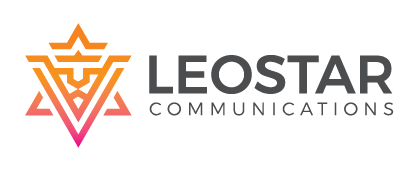7 Fresh Approaches to Structuring Content in Your Business Presentation
If you have sat through a business presentation that felt like an endless stream of figures and facts, you are not alone bro. You know, traditional presentation formats often lack excitement and struggle to capture the audience’s attention, it seems boring. But by exploring new methods of organizing your content, you can craft a killer business presentation that is both educational and interesting.
In this blog post, we will delve into seven methods of structuring your content that will set your next business presentation apart from the rest.
1. The Circular Structure
Step away from the traditional linear format of the presentation and represent your content, where each segment seamlessly connects to the next, forming a continuous and flowing story. This method helps you reinforce key points throughout your presentation without sounding repetitive.
Here’s the key point of how to implement the circular format:
- Start with a captivating hook: Introduce the core theme or problem your presentation addresses.
- Branch out with supporting arguments: Dedicate each section to exploring different aspects of your theme or potential solutions to the problem.
- Connect back to the core: Throughout the presentation, refer back to your initial hook, highlighting how each section contributes to the big picture.
- Conclude with a call to action: End by reiterating your main points and prompting the audience to take the next step.
Consider implementing this structure for presentations that cover complex topics and interconnected concepts. By creating a loop like a flow, you can make sure that the audience gets the overall message, even if they happen to miss a specific section.
2. The Puzzle Method
Capture your audience’s interest using the puzzle approach. Divide your business presentation content into individual “Puzzle Pieces”, each representing a fundamental point or idea. Introduce these pieces one by one, engaging the audience to wonder about their connections.
Here’s how to utilize it:
- Start with a captivating question: Pose a central question that your presentation aims to answer.
- Introduce the puzzle pieces: Each section unveils a crucial piece of information related to the central question.
- Gradually build the picture: As you present each piece, subtly hint at how they connect.
- Reveal the complete picture: In the conclusion, bring all the pieces together, providing the answer to the initial question and showcasing the bigger picture.
This structure encourages active involvement from the audience as they actively work to connect the pieces and get the information. It works exceptionally best for presentations involving product demonstrations, case studies, and data analysis.
3. The Maze Approach
Enhance your every business presentation style by using the maze approach, which is ideal for addressing problem-solving scenarios or overcoming challenges. In this strategy, you can lead your audience through maze information, offering diverse pathways and viewpoints for exploration.
Here’s how to create an informative business maze:
- Establish the challenge: Start by clearly defining the problem or obstacle your presentation addresses.
- Present potential paths: Dedicate each section to exploring a different approach or solution to the challenge.
- Introduce roadblocks and “aha” moments: Present potential pitfalls and unexpected insights along the way to keep the audience engaged.
- Lead to the solution: In the conclusion, guide them towards the most effective solution or strategy.
This structure ensures that your audience remains actively engaged, guiding them through the captivating twists and turns toward the ultimate resolution. It is especially effective for business development presentations that are focused on strategic planning, risk management, and market analysis.
4. The Gallery Walk
Elevate your business presentation using the gallery walk method, which is perfect for conveying diverse perspectives and a wealth of information. It’s like each part of your presentation is an interactive exhibit within a gallery.
Here’s how to curate your great presentation gallery:
- Create visually distinct sections: Dedicate each section to a specific topic or aspect of your overall theme.
- Utilize visuals and interactive elements: Employ infographics, charts, and interactive tools to make your exhibits engaging.
- Offer flexible navigation: Allow your audience to explore the “exhibits” at their own pace, revisiting sections they find particularly interesting.
- Provide a central guide: Include a clear overall message or framework that connects the individual exhibits.
This approach usually appeals to audiences with various learning preferences and attention spans, making it a fantastic option for showing industry trend analysis, product demos, and research findings. This type of presentation format is especially well-suited for events like trade shows and conferences. Where attended seek concise and engaging content due to time limitations.
5. The Time Capsule Technique
Introduce a historic touch to your business presentation using the time capsule technique. Take your audience on a journey through various time periods, illustrating the evolution of concepts and their lasting relevance as per one-by-one presentation slide
Here’s how to create a business presentation that captivates time capsule experience:
- Start with a historical context: Briefly introduce the topic and its historical roots.
- Travel through time periods: Dedicate sections to showcase how the topic has developed or remained significant across different eras. Utilize historical data, quotes, or even visuals like old photographs or advertisements.
- Bridge the past to the present: Highlight how past experiences and knowledge inform the present situation.
- Conclude with a future outlook: Based on historical trends, discuss potential future implications for your topic.
This strategy adds richness and curiosity to your presentation skills, showing your awareness of the historical background related to the topic. It is effective, especially on techno advancements, industry trends, and notable achievements within your company.
6. The Mirror Effect in Business Presentation
Build a stronger bond with your audience through the mirror effect approach, it’s kind of incorporating their perspective and thoughts to make a more effective business presentation. This interactive approach creates a two-way exchange, where you can make your attendees feel valued and actively engaged.
Here’s how to make a reflective business presentation:
- Start with a thought-provoking question: Pose a question that taps into the audience’s existing knowledge or concerns.
- Incorporate audience responses: Use polls, Q&A sessions, or live surveys to gather audience input throughout the presentation.
- Reflect back their perspectives: Integrate audience responses into your presentation, demonstrating that you value their insights.
- Address concerns and tailor content: Use audience feedback to adjust your presentation’s focus or address specific points of interest.
By creating a sense of collaboration and communication, this technique enhances the audience’s connection with the content. It’s the best presentation choice for businesses focusing on industry surveys, customer feedback analysis, and product pitches.
7. The Multi-Dimensional Grid
Maximize the effectiveness of your data or idea sharing with the multi-dimensional grid techniques. By structuring your content grid layout, you offer viewers the opportunity to navigate through diverse layers of information seamlessly.
Here’s how to create a multi-dimensional grid presentation:
- Develop a core grid framework: Design a grid structure with different axes representing key categories or themes.
- Populate the grid with content: Each section within the grid holds specific details, data points, or visuals related to the intersecting themes.
- Utilize interactive elements: Consider incorporating interactive tools like hover-over features or clickable elements to reveal additional information within the grid.
- Offer a clear explanation: Provide a guide or legend to help the audience understand how to navigate and interpret the information within the grid.
This approach empowers viewers to dive deeper into specific points of your great business presentation while maintaining a clear understanding of the overall message. It is especially effective for professional business presentation ideas that involve comparing products, handling data sets, or conducting detailed marketing analyses.
Also Read-
Effective Business Presentation- 6 Opening and Closing Statement for 10X impact
Conclusion
Take a break from traditional norm presentation and create a compelling and powerful business presentation that not only educates but also captivates your audience. Explore these seven creative methods that offer diverse ways to organize your content, ensuring it connects profoundly with your audience and conveys a crystal-clear message.
Excited to transform your next presentation?
Look no further than the best business presentation design service by LeoStar for assistance! Our team of skilled presentation designers is dedicated to creating a successful business presentation with perfect business strategy and visually striking. Let us help you select the ideal content structure, create compelling visuals, and develop captivating storytelling that leaves a lasting impression with the best business presentation.
Reach out to LeoStar today and take your new business presentation to unreachable heights!
Ready to transform your next presentation?
LeoStar can help! We are a team of presentation design experts passionate about creating visually stunning and strategically crafted business or corporate presentations. Let us help you choose the perfect structure for your content, develop captivating visuals, and craft a compelling narrative that will leave a lasting impression.
Contact LeoStar today and elevate your next business presentation!






